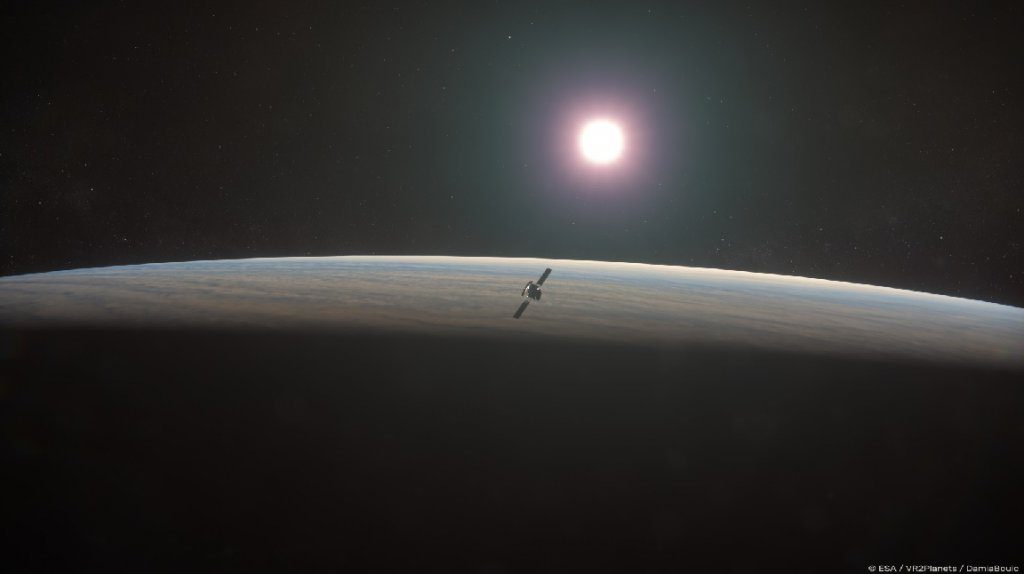ESA decided the winner of its fifth “Medium-class” Cosmic Vision competition on 10 June. Out of the two finalists the Venus-oriented “EnVision” orbiter won out over the gamma-ray burst studying “THESEUS”. The initial call for mission concepts was announced in 2016 and in 2017 13 potential missions were selected for further deliberation. This was narrowed down to three finalists in 2018: EnVision, THESEUS, and SPICA (This mission was dropped from the running in 2020).
Medium-class missions have a standard cost cap of EUR€550 million (US$670 million). This amount reportedly covers cost of the spacecraft, launch, and initial operations. Being a European project this mission is baselined to launch on an Ariane 6 (likely an Ariane 62) rocket, currently planned for 2032.

Artist’s impression of the EnVision orbiter above Venus. Courtesy of ESA/VR2Planets/DamiaBouic
The EnVision mission will take the form of a Venus orbiter and will attempt to answer planetary science questions. Primarily the mission is intended to study the Venusian “tesserae”, considered to be equivalent to continents here on Earth. Through study of these rock formations it is hoped to gleam a better understanding of the history of our most similar planetary neighbour. The mission will also benefit from co-operation with the two other Venus missions recently announced by NASA – “Veritas” and Davinci+”. These three missions are all expected to be in-orbit of Venus at the same time in the early-2030s and it is planned that there will be experimental synergies between them.
Instrument contributions will primarily come from Europe with Italy, Germany and Belgium each providing one. France will be leading development of two instruments. In a mirror of the European SAR instrument being supplied for the NASA Veritas mission, the USA will build a similar instrument for EnVision.








